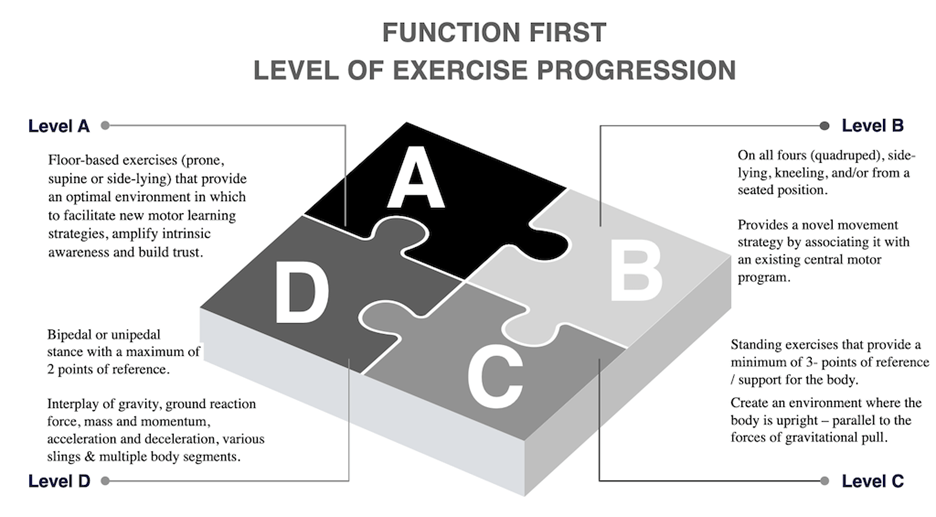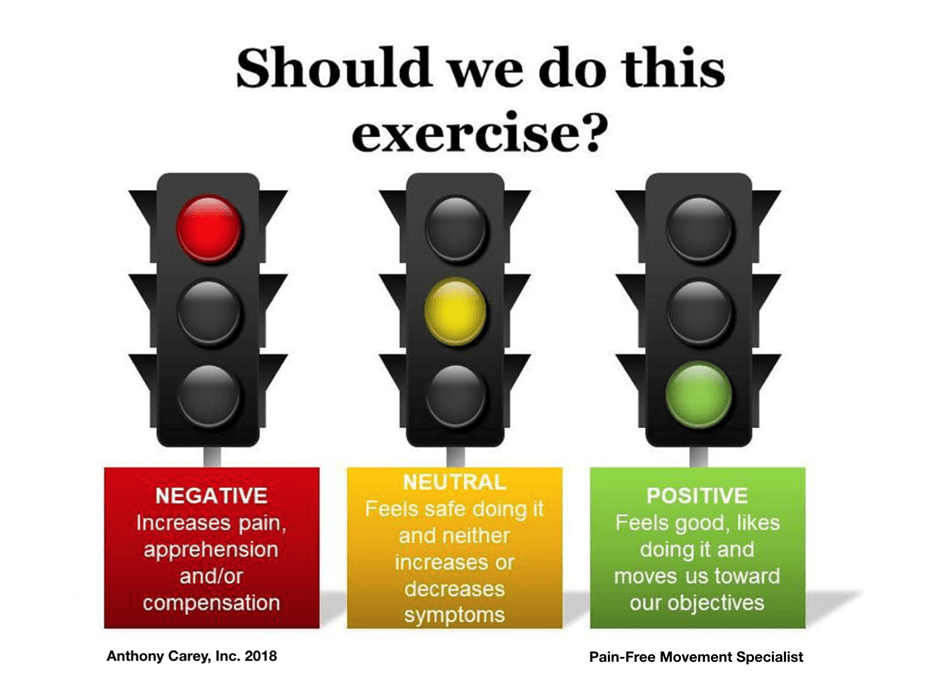Navigating corrective programme design and the client in pain: Staying in your lane
While the unwritten ‘rules of the road’ tolerate a slow driver leisurely coasting in the fast lane, such concessions within the movement industry have considerable ramifications. Consider the health and exercise professional who applies a manual, hands-on approach in an attempt to solve their client’s pain problems.
Make no mistake, the influence manual therapy can have on individuals experiencing chronic pain can be profound; but this lane of ‘hands-on treatment’ is reserved specifically for those with highly specialised training and regulated licences.
For the health and exercise professional, navigating the turbulent waters of chronic pain requires one to become proficient with designing strategic and highly personalised exercise programmes.
Primary objectives – Your 80/20
Working with individuals in chronic pain is undoubtedly complex. It can sometimes feel like a labyrinth of ambiguity; particularly when clients begin referencing their symptoms. What’s more, coupled with subjective symptoms is the challenge of deciphering each client’s assessments results. It can sometimes be difficult to even know where to begin.
This is where scripting specific objectives and adhering to Vilfredo Pareto’s 80/20 principle yields enormous dividends. This principle asserts that 20% of one’s focus will ascertain 80% of the desired outcome. In relating the 80/20 principle to programming and analysing assessment data, a key question to consider becomes “what were the biomechanical constraints that consistently showed up in the majority of the client’s assessments?”
For example, was the client’s left hip lacking sufficient amounts of internal rotation, no matter which global assessment was performed? Perhaps the client’s inability to load in the frontal plane was observed in their single-leg stance, anterior lunge and gait assessments.
These would be examples of identifying consistent, inefficient movement patterns which ultimately become the focus of one’s 80/20. These patterns are what Pain-Free Movement Specialists refer to as their ‘big rocks’, and it’s these big rocks that not only script the specific objectives accompanying effective programme design but also influence the order and sequence of each exercise.
A framework for exercise progression – Levels A-D
Just how significant is the sequencing of exercises? Think about what would happen if you had the correct numbers to a locked vault, yet were unaware of the order and sequence in which to place them? Without proper order and sequencing (syntax), the numbers are essentially useless. The vault will remain locked.
The same principle holds true with programming. One of the fundamental principles embedded in the Pain-Free Movement Specialist curriculum is that each exercise should prepare the body for the next. Therefore, logic and intent guide each of the exercises selected. This process can be broken down into four levels of exercise progression, each of which ascends through the cognitive, associative and autonomic phases of motor learning.
Level A corrective exercises
‘Level A’ corrective exercises are floor-based exercises (prone or supine) that provide an optimal environment to facilitate new motor learning strategies. The climate created here focuses on the cognitive phase of motor learning, enhancing each client’s intrinsic awareness while simultaneously establishing trust between both the client and the fitness professional.
Level B corrective exercises
‘Level B’ corrective exercises are exercises that are performed on all fours (quadruped), kneeling and/or in a seated position. The ascending complexity here is providing a novel movement strategy by associating it with an existing central motor programme already stored in the client’s movement ‘database’. Here we enter the associative phase of motor learning.
Level C corrective exercises
‘Level C’ corrective exercises are standing exercises that provide at least three points of reference for the body. The objective here is to create an environment where the body is upright – parallel to the forces of gravitational pull. These exercises provide an optimal environment to begin transitioning from the cognitive and associated phases of motor learning towards the autonomic phase.
Level D corrective exercises
‘Level D’ corrective exercises are performed in a bipedal or unipedal stance with a maximum of two points of reference. These exercises are designed for the autonomic phase of sensory-motor integration and should require no need for cognitive processing. Minimal verbal instruction/coaching is required. The interplay of gravity, ground reaction force, mass and momentum, acceleration and deceleration, various slings and multiple body segments are all elements that may be associated with level D exercises.

The psychosocial realm of programming
Each individual views the world through a different lens, ultimately shaping and moulding his or her unique perspective. This is particularly relevant when working with clients in pain. And because pain is much more than just a sensory mechanism, experiencing pain on a consistent basis can negatively transform an individual’s thoughts, feelings, perceptions and beliefs regarding movement – influencing not just biological, but psychological and social neurosignatures as well.
Therefore, an important question to consider when navigating programme design becomes “what does a successful corrective intervention look like to the client?” To some, success is walking up stairs with confidence, free from knee pain. To others, standing for prolonged periods of time while cooking dinner with their spouse is the desired outcome.
The art of a successful intervention involves understanding and validating each client’s emotional, psychological and social concerns, while addressing his or her unique biomechanical needs. Together, these ingredients yield a comprehensive framework towards designing a strategic and personalised corrective strategy.
The image below provides clients with a graded scale of psycho-social autonomy and self-reliance, where the re-education of movement modulation and exercise tolerance is based on their own intrinsic awareness and overall sense of safety.

Dénouement
Above all, remember that the genesis of creating change is deeply rooted within a fitness professional’s awareness of the multidimensional interaction between biological, psychological and social factors – all of which contribute to an individual’s pain experience.
And, should you ever find yourself adrift, floating down the river of programme-design insecurity, remember that working with individuals in pain is a reciprocal, collaborative process. It’s a script in which each client is cast as the main character in his or her story, with the health and exercise professional functioning as their guide – a fellow traveller guiding each individual towards arriving safely (and pain-free) at their desired end in mind.
Where to next? Why not check out ‘The Four Seasons Of Chronic Pain’ by Kevin Murray








